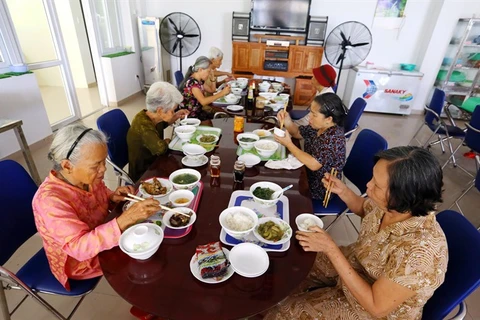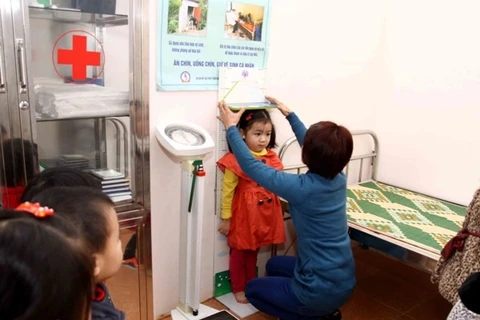Hanoi, (VNA) - A study shows that the rate of overweight and obese primary students is 29 percent while that among secondary school students and high school students is 19 percent and 9.5 percent, respectively.
Inappropriate diets and a lack of physical activity are blamed for the situation, according to a new study by the National Institute of Nutrition.
Vietnam is facing a duel health burden of malnutrition and obesity. The malnutrition rate is highest among secondary students (13 percent), while the figures among high school and primary kids are 12 and 7.5 percent, respectively.
Students at school levels account for a quarter of the country’s population. In order to improve the stature of the Vietnamese people, it is necessary to have a strategy and orientation to encourage physical activities as well as pay due attention to appropriate diets for children.
At a workshop held in Hanoi on July 3 to announce the results of a study on nutrition status, dietary intake and some food habits among school children in Vietnam, deputy head of the nutrition institution Truong Tuyet Mai said that the rate of overweight and obese primary school students is 29 percent, much higher than that among secondary school students (19 percent), and high school students (9.5 percent).
 Deputy head of the nutrition institution Truong Tuyet Mai speaks at the conference. (Photo: VietnamPlus)
Deputy head of the nutrition institution Truong Tuyet Mai speaks at the conference. (Photo: VietnamPlus)
The study was carried out by the National Institute of Nutrition during 2017-2018, with the participation of more than 5,000 students aged ranging from 7 to 17 at 75 schools in Hanoi, Ho Chi Minh City, northern Thai Nguyen province, central Nghe An province, and southern Soc Trang province.
It found that overweight kids consume more protein-rich food, sugary drinks and sweet products.
Primary students’ dietary intake is higher than the recommended level in terms of energy and protein. Meanwhile, rations of secondary and high school students lack in energy, iron, zinc, and several kinds of vitamins like A, B and C, the study revealed.
Besides, low levels of physical activity and high screen time are said to contribute to the increasing rate of obesity among Vietnamese kids.
There are several factors that lead to obesity, including age, gender, living conditions, areas, socio-economic status and education level of parents. The study revealed that malnutrition rate is higher in rural areas while obesity is more prevalent in urban localities.
A survey by the institute in 2017 showed that the stunting rate for children under 5 was 23.8 percent while the rate of underweight children was at 13.8 percent, meaning one out of every four Vietnamese children under the age of five was stunted or malnourished.
 Overweight among Vietnamese students (Source: National Institute of Nutrition, Graphic by: VietnamPlus)
Overweight among Vietnamese students (Source: National Institute of Nutrition, Graphic by: VietnamPlus)
According to Associate Professor Tran Thuy Nga, who is head of the institute’s Micronutrient Research Department, both malnutrition and obesity pose great risks of chronic diseases like diabetes, high blood pressure and coronary artery disease, among others.
As students make up a quarter of the country’s population, it is necessary to pen rational strategies to provide appropriate nutrition for kids, and help them exercise more, Nga said.
Intervention programmes are needed to stave off malnutrition among rural children and obesity in urban kids. Their portions should be rich in fiber sources and micronutrients. As for malnourished children, they should be provided with high-protein diet as recommended by the World Health Organisation.
She said families, schools and government agencies need to create favourable conditions for children to have healthy and balanced meals, create playgrounds for children to exercise and play sports and ensure children sleep enough each night.
Vietnam has set to reduce childhood malnutrition and the stunting rate to less than 20 percent and the obesity rate among adolescents under 12 percent by 2025.-VNA

























